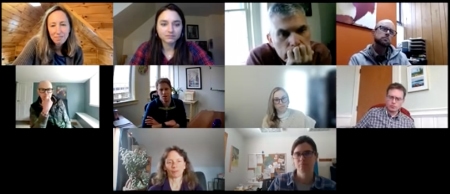Resilience Indicator Development in the Northern Border Forests (2022)
What role might existing ecological datasets play as indicators of community resilience in the northern forest?
April 7, 2022
April 15, 2022
May 2, 2022
Zoom
With support from the Northern Border Regional Commission, the Hubbard Brook Research Foundation (HBRF) is working with collaborators from the USDA Forest Service, the University of Maine, and the University of Vermont to develop quantitative indicators of social and economic resilience in the northern border region of the northeastern U.S. HBRF’s role in the project is to bring together experts from different domains (e.g., science, policy, industry, community development) to synthesize perspectives on how forest ecosystem research, data, and science-based tools might be used to inform investment decisions in forest communities.
In April and May of 2022, HBRF convened a series of focus groups to build out three generic decision narratives that consider and apply available forest ecosystem data to community development initiatives. We asked each participant to attend a 30-minute interview and a 60–90-minute facilitated discussion via Zoom focused on one of three generic decision-making contexts:
- Designing a statewide initiative to improve the recreation economy
- Conserving and managing a town forest for community resilience
- Investing in the future bioeconomy of the northern forest region.
From these interviews and meetings, HBRF will generate three narratives that capture multiple perspectives on the potential for ecological data and online tools like data dashboards to apply in these broad decision contexts, and what additional data and tools might be needed in the future.
This work will be integrated with a socio-economic study led by collaborating investigators at the University of Maine and University of Vermont.

Products
- Decision narratives and final report (available September 2022)
